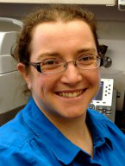Cutaneous squamous and neuroendocrine carcinoma: Genetically and immunohistochemically different from Merkel cell carcinoma Journal Article
| Authors: | Pulitzer, M. P.; Brannon, A. R.; Berger, M. F.; Louis, P.; Scott, S. N.; Jungbluth, A. A.; Coit, D. G.; Brownell, I.; Busam, K. J. |
| Article Title: | Cutaneous squamous and neuroendocrine carcinoma: Genetically and immunohistochemically different from Merkel cell carcinoma |
| Abstract: | Cutaneous neuroendocrine (Merkel cell) carcinoma most often arises de novo in the background of a clonally integrated virus, the Merkel cell polyomavirus, and is notable for positive expression of retinoblastoma 1 (RB1) protein and low expression of p53 compared with the rare Merkel cell polyomavirus-negative Merkel cell carcinomas. Combined squamous and Merkel cell tumors are consistently negative for Merkel cell polyomavirus. Little is known about their immunophenotypic or molecular profile. Herein, we studied 10 combined cutaneous squamous cell and neuroendocrine carcinomas for immunohistochemical expression of p53, retinoblastoma 1 protein, neurofilament, p63, and cytokeratin 20 (CK20). We compared mutation profiles of five combined Merkel cell carcinomas and seven 'pure' Merkel cell carcinomas using targeted next-generation sequencing. Combined tumors were from the head, trunk, and leg of Caucasian males and one female aged 52-89. All cases were highly p53-and p63-positive and neurofilament-negative in the squamous component, whereas RB1-negative in both components. Eight out of 10 were p53-positive, 3/10 p63-positive, and 3/10 focally neurofilament-positive in the neuroendocrine component. Six out of 10 were CK20-positive in any part. By next-generation sequencing, combined tumors were highly mutated, with an average of 48 mutations per megabase compared with pure tumors, which showed 1.25 mutations per megabase. RB1 and p53 mutations were identified in all five combined tumors. Combined tumors represent an immunophenotypically and genetically distinct variant of primary cutaneous neuroendocrine carcinomas, notable for a highly mutated genetic profile, significant p53 expression and/or mutation, absent RB1 expression in the context of increased RB1 mutation, and minimal neurofilament expression. © 2015 USCAP, Inc All rights reserved. |
| Keywords: | immunohistochemistry; adult; clinical article; controlled study; human tissue; protein expression; aged; middle aged; gene mutation; squamous cell carcinoma; genetic analysis; protein p53; immunophenotyping; merkel cell polyomavirus; cytokeratin 20; merkel cell tumor; protein p63; neurofilament; retinoblastoma binding protein 1; next generation sequencing; human; male; female; priority journal; article; cutaneous squamous and neuroendocrine carcinoma |
| Journal Title: | Modern Pathology |
| Volume: | 28 |
| Issue: | 8 |
| ISSN: | 0893-3952 |
| Publisher: | Nature Research |
| Date Published: | 2015-08-01 |
| Start Page: | 1023 |
| End Page: | 1032 |
| Language: | English |
| DOI: | 10.1038/modpathol.2015.60 |
| PROVIDER: | scopus |
| PUBMED: | 26022453 |
| PMCID: | PMC4920599 |
| DOI/URL: | |
| Notes: | Export Date: 2 September 2015 -- Source: Scopus |
Altmetric
Citation Impact
BMJ Impact Analytics
Related MSK Work











